The graveyard in Oceanside is the oldest active “cemetery” in North San Diego County

Mission San Luis Rey https://www.sanluisrey.org/
Introduction
A blog report of my visit to Mission San Luis Rey graveyard, with many features that I think my fellow Taphophiles would enjoy! The Mission is named for the 13th Century King of France, St. Louis IX. Burials started in 1798, the same time construction began on the original buildings. Padre Fermin Francisco de Lasuen from Spain directed the construction.
In 1835, Mexico “secularized” the Mission (ended it’s status as a church). The Mexican military used the buildings as barracks and to house animals. After the U.S. defeated Mexico for control of the region, American military forces took over the buildings. After the American military left, the buildings sat abandoned for about 50 years. Restoration of the property back to a Mission began in 1892, under the direction of Franciscan Father Jeremiah Joseph O’Keefe.
Photo below: Undated photo from Bower’s Museum collection. It is likely from after 1830, as the Luiseno monument is visible in left center (see below for info on the monument)

Visiting the Mission
The photo below shows the main chapel at the Mission as it is today. The tower is visible over the chapel. The long, low wall marks the South boundary of the graveyard. The outer surface of the East wall of the chapel acts as the West boundary of the original graveyard:

Photos below: you can see a map of the Mission buildings and grounds on a kiosk in the parking lot area. In the close-up photo of the map, you can see the original graveyard and its extensions.
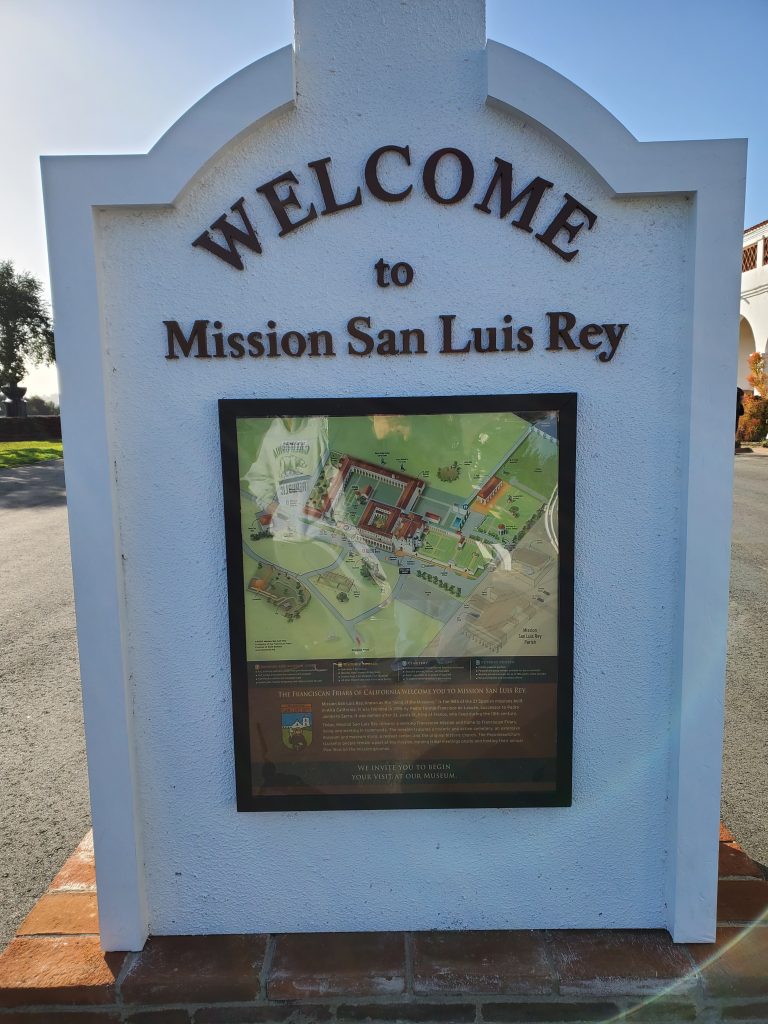
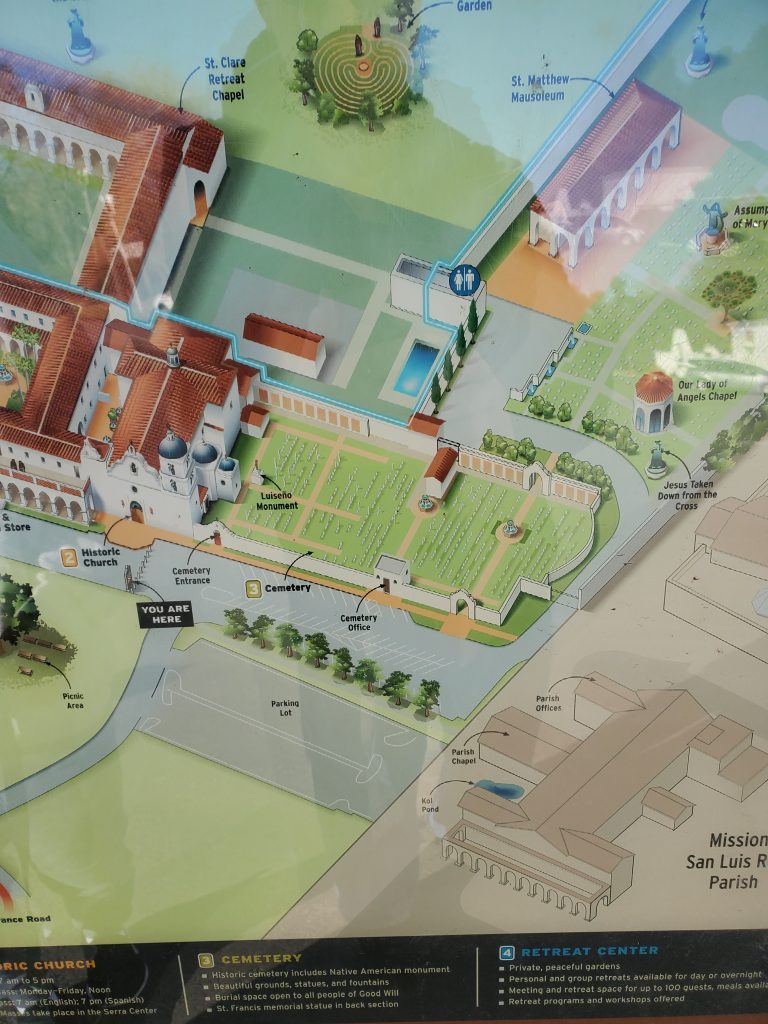
The Disney connection!
The main entrance to the graveyard has a direct connection to Disneyland! In the 1950s, Disney used the gate in scenes for the TV series Zorro. To make the gate more photogenic, Disney engineers added the skull and crossbones pattern above the gate itself. As you can see, that “prop” remains in place!

The original (old) section is just inside the main gate. Some burials in this area are not marked. A few of the graves with markers don’t have much information. (See below):
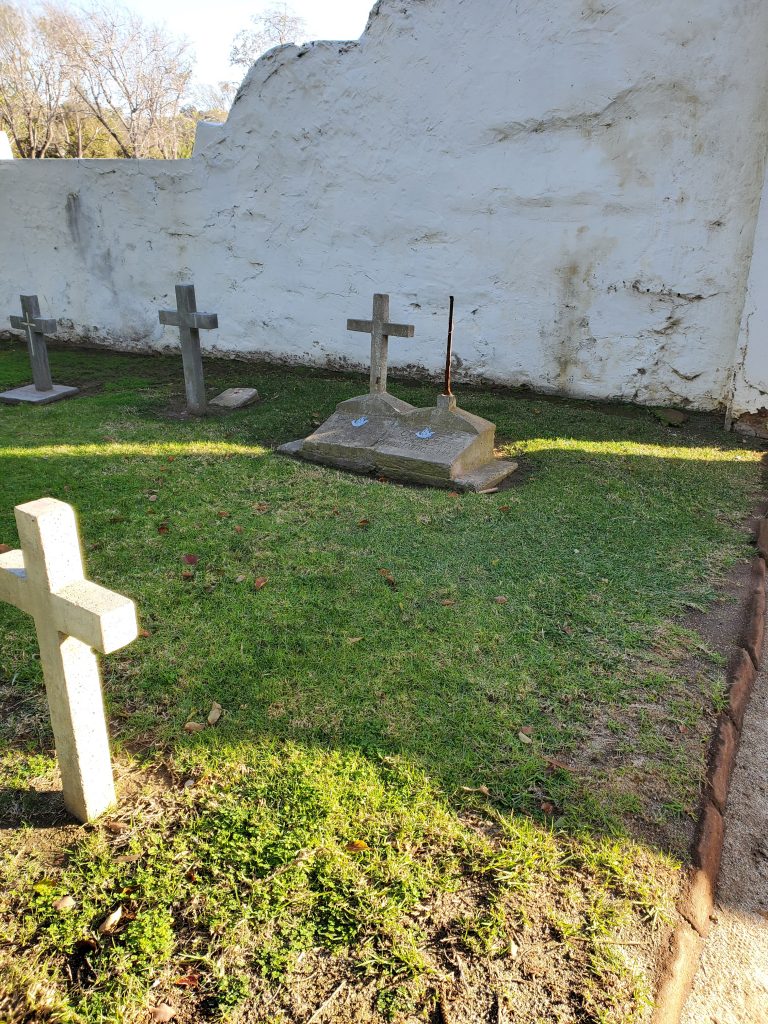
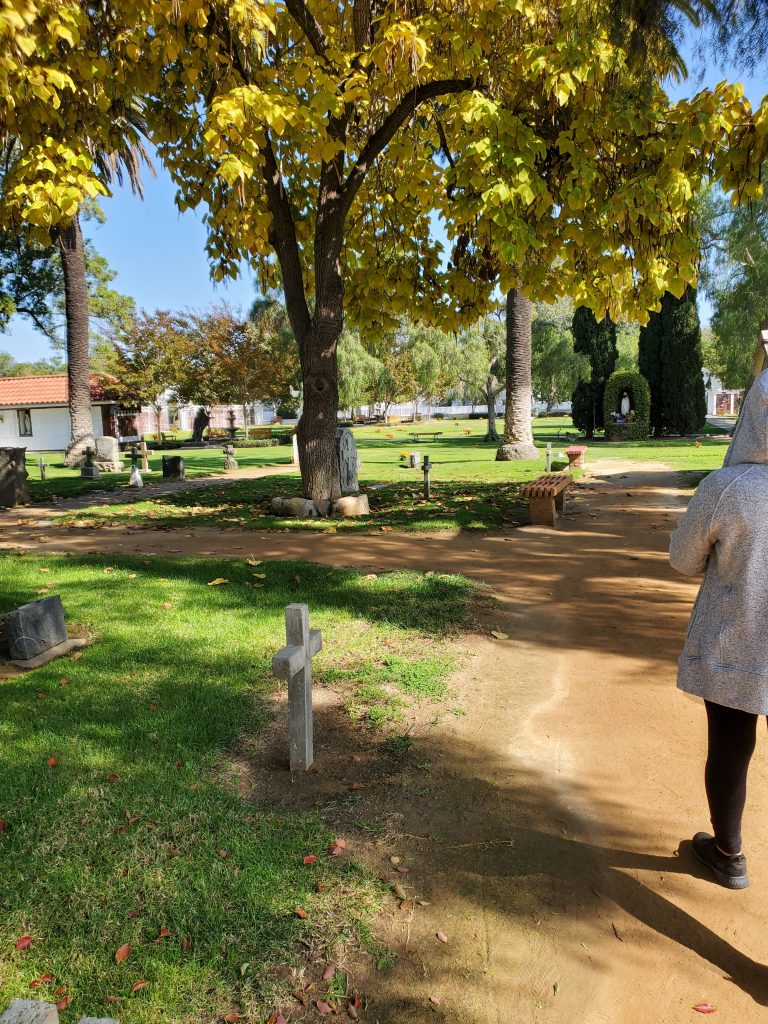

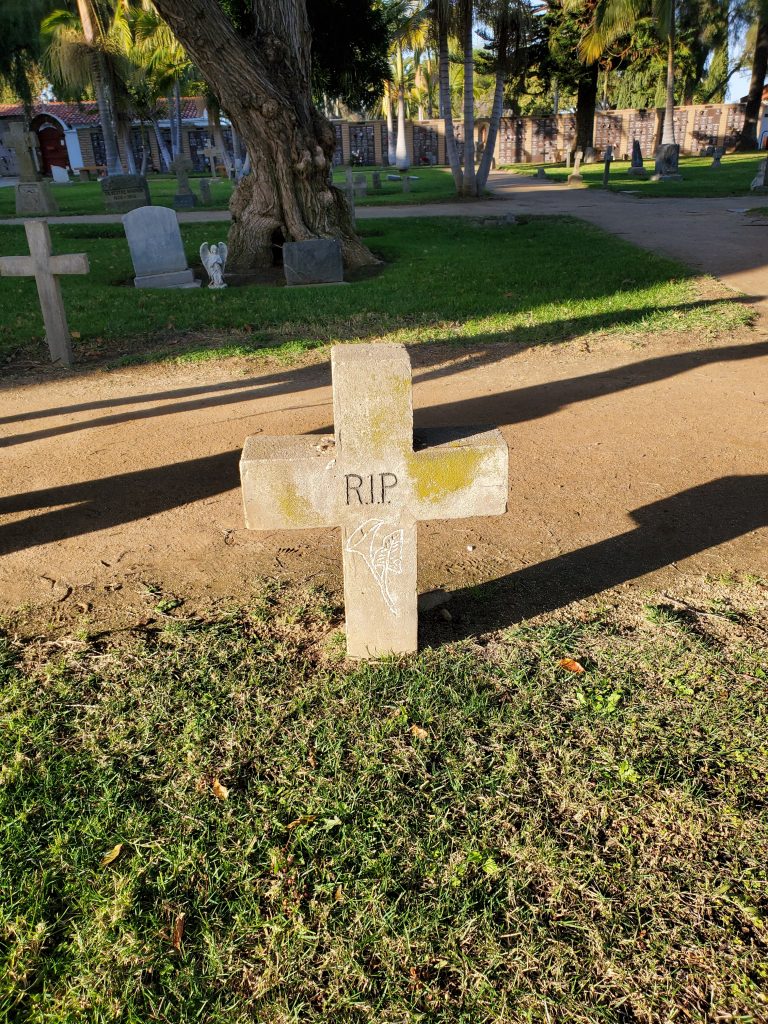
Franciscan crypts
The crypts are exclusively for Franciscans. Many served at the Mission. The crypt is an extension of the main chapels’ East wall, on the West side of the original graveyard. The individual crypts, in my opinion, look to be too small to fit an intact body. They are the perfect size to hold cremains. My understanding is that the Fransiscans follow the guidelines of the Catholic church. Church rules changed to allow cremation in 1963. Many of the niches I can see date to before that. They are interred in their habit (robe) and cincture (rope around the waist). In some situations, their remains are moved years after burial. When this happens, a new habit and cincture are placed over the bones or cremains in the new location.
Photos of the cyrpt below: In the close-up photo of the metal gate, you can see the letters RIP inside the metal circle)

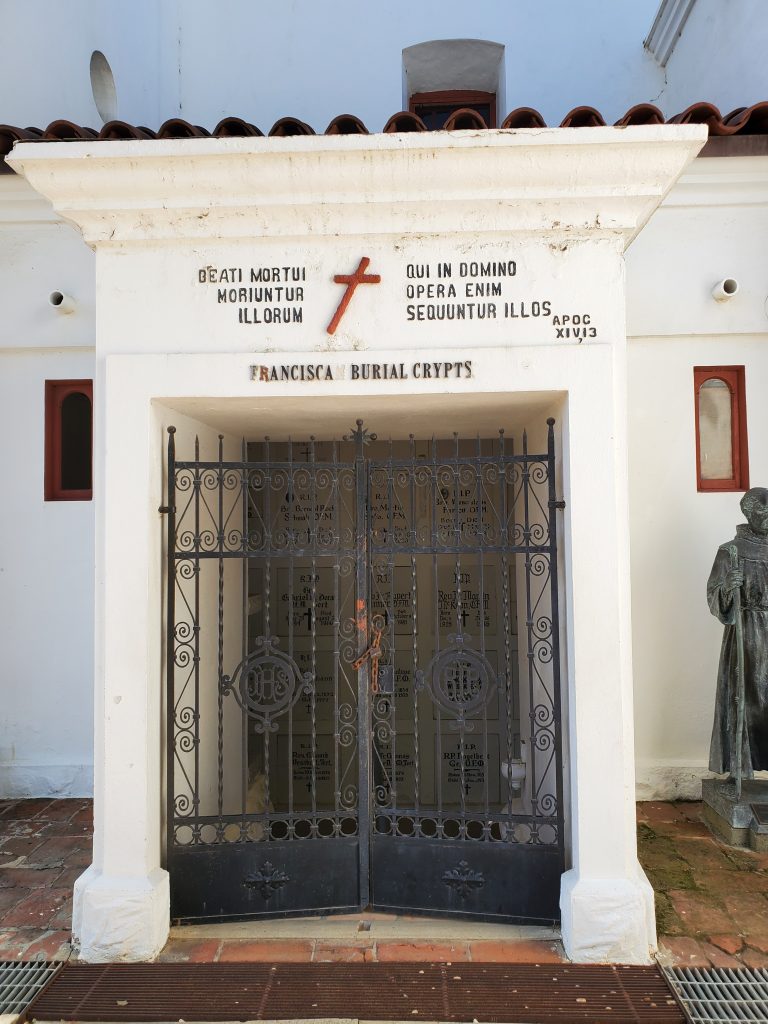


Luiseno memorial
The photo gallery below shows the “Indian Memorial”, now referred to as the Luiseno memorial. The plaque on the monument states 1830. The Franciscans recognized the need to memorialize the many “ataaxam” or Native Americans buried in the graveyard without a marker identifying their grave.
The ataaxam were known as Luiseno after “Christianization” by the Fransiscans. They were used as a labor force to construct the buildings. About — San Luis Rey Band of Mission Indians (slrmissionindians.org)https://www.slrmissionindians.org/about

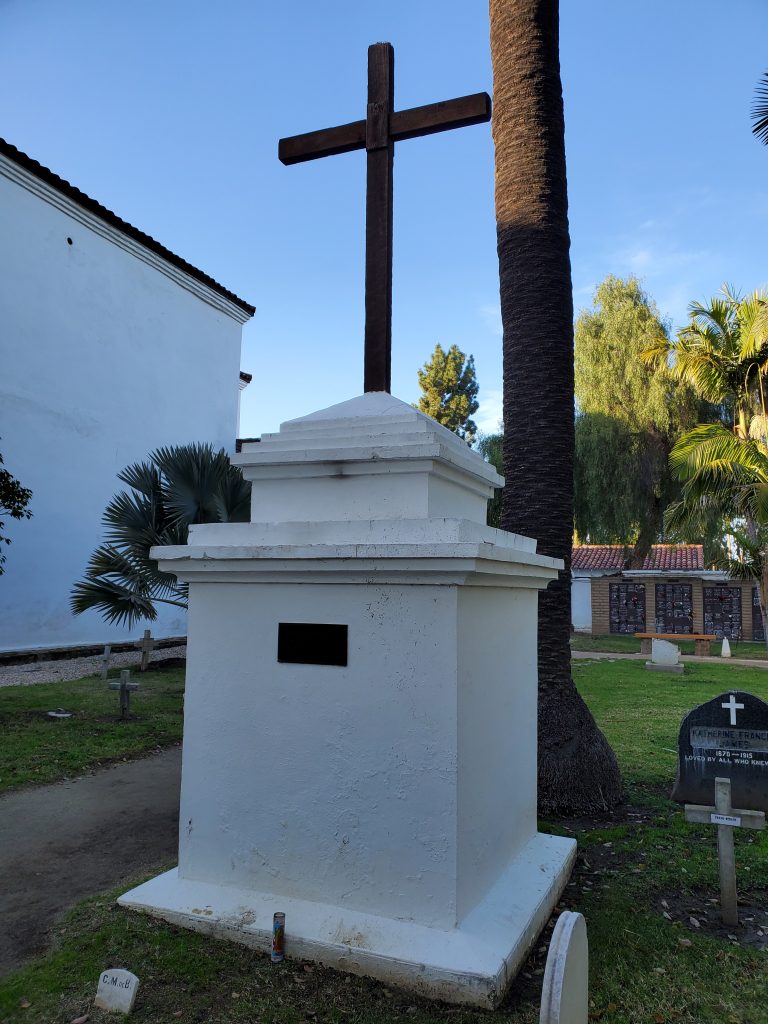
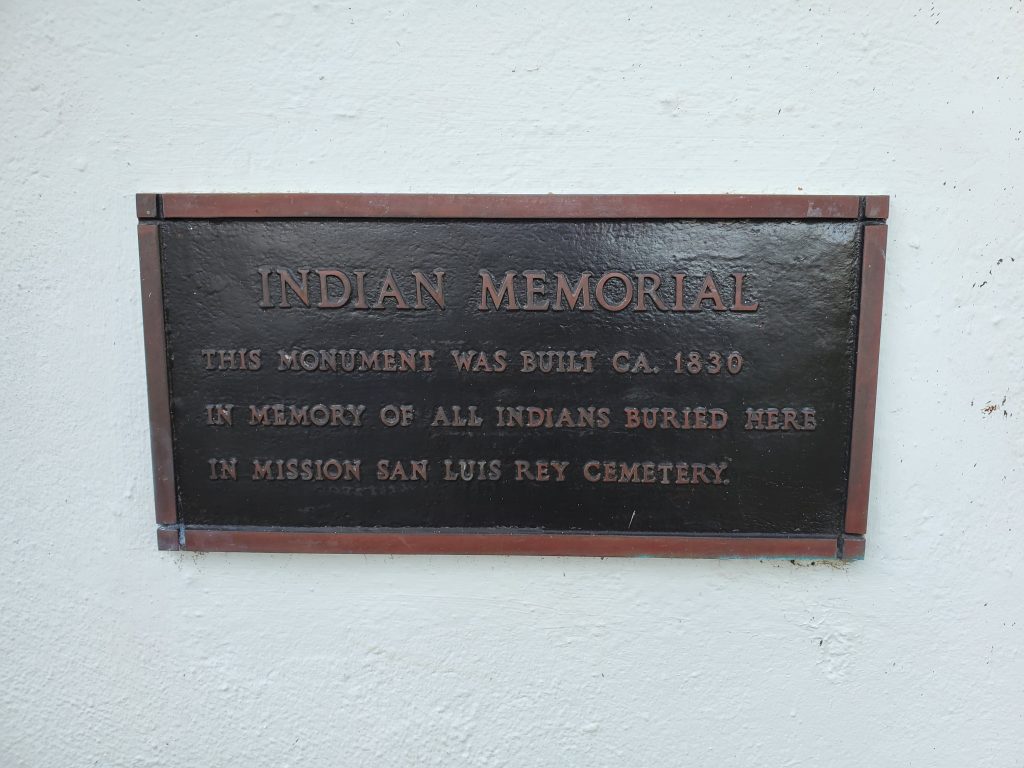
South wall extension
Photo on the left below: I’m standing outside of the graveyard’s South wall, pointing at the original boundary corner. The “seam” of the wall is visible at the East boundary extension.
Photo on the right below: you can see that same wall “joint” from inside the graveyard.


Family decorations
Photos below: families can decorate the graves and leave windchimes in the trees.

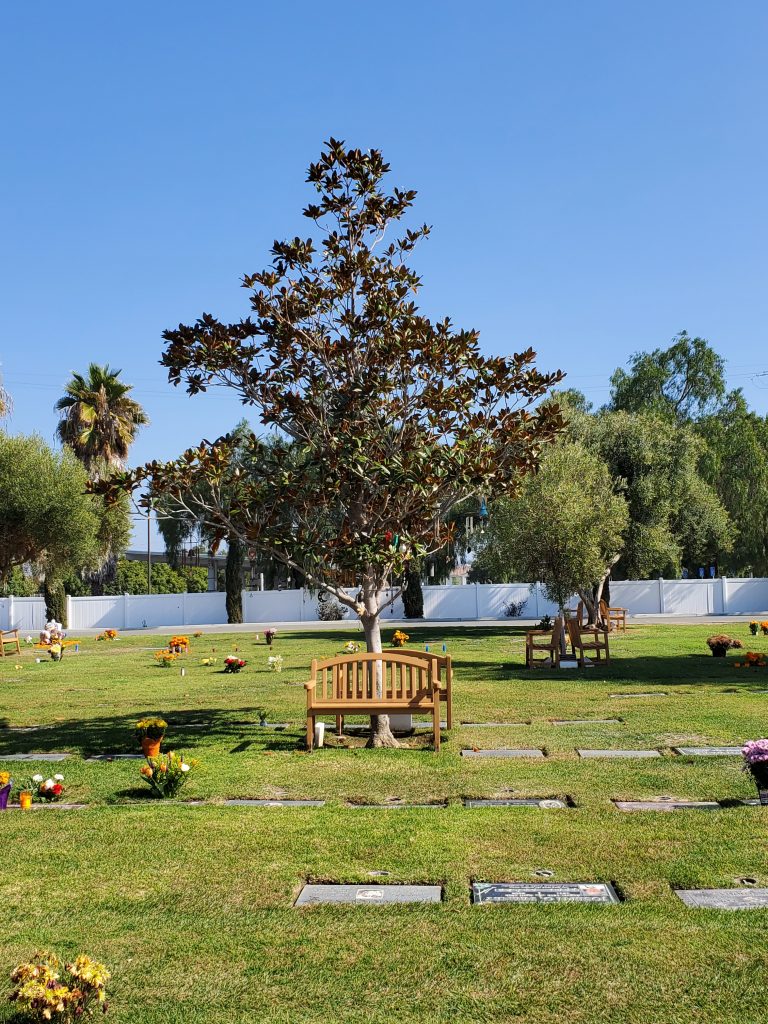

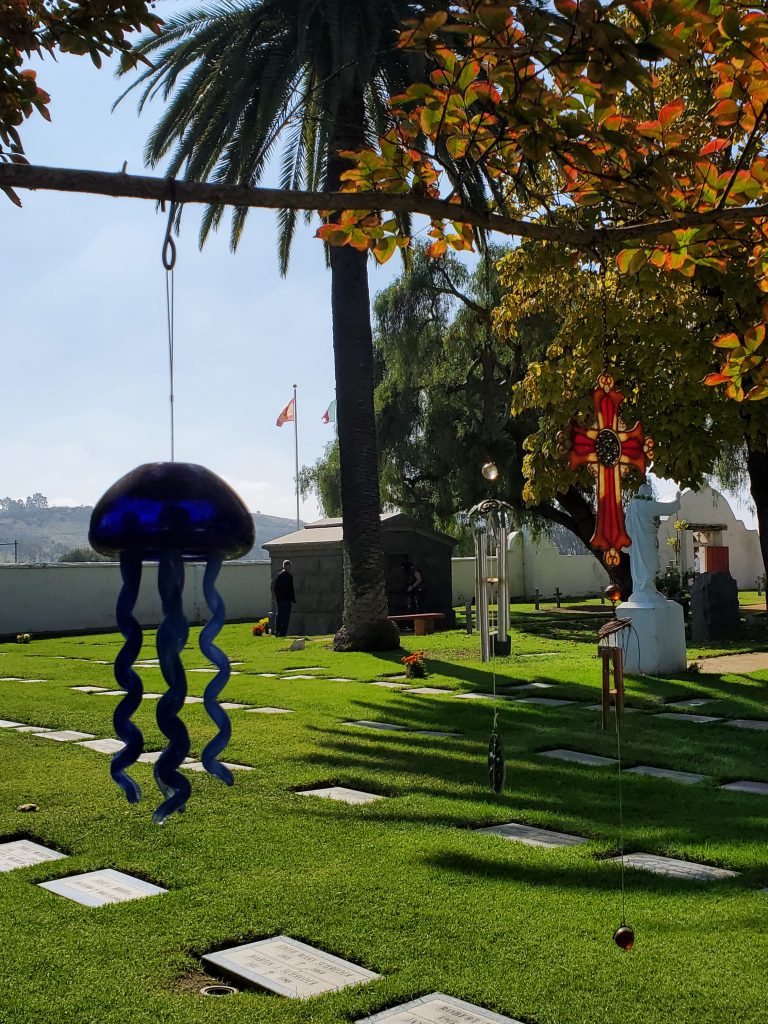
Private mausoleum
Photo below: the private mausoleum of Anna (died 1912) and Thomas W Corby (died 1924). Near the original section of the graveyard
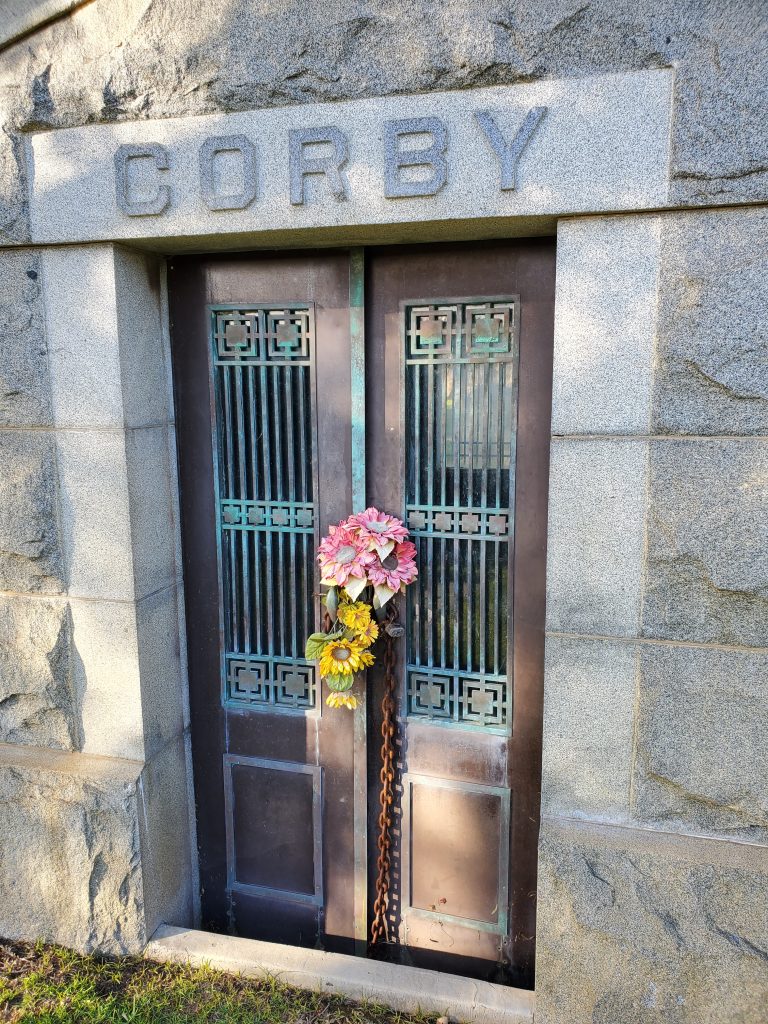
Columbaria
Photo on the left below: view along the East wall of the outdoor mausoleum. Photos on the right below: clear glass niches in corner columbaria at the corners of the outdoor mausoleum.
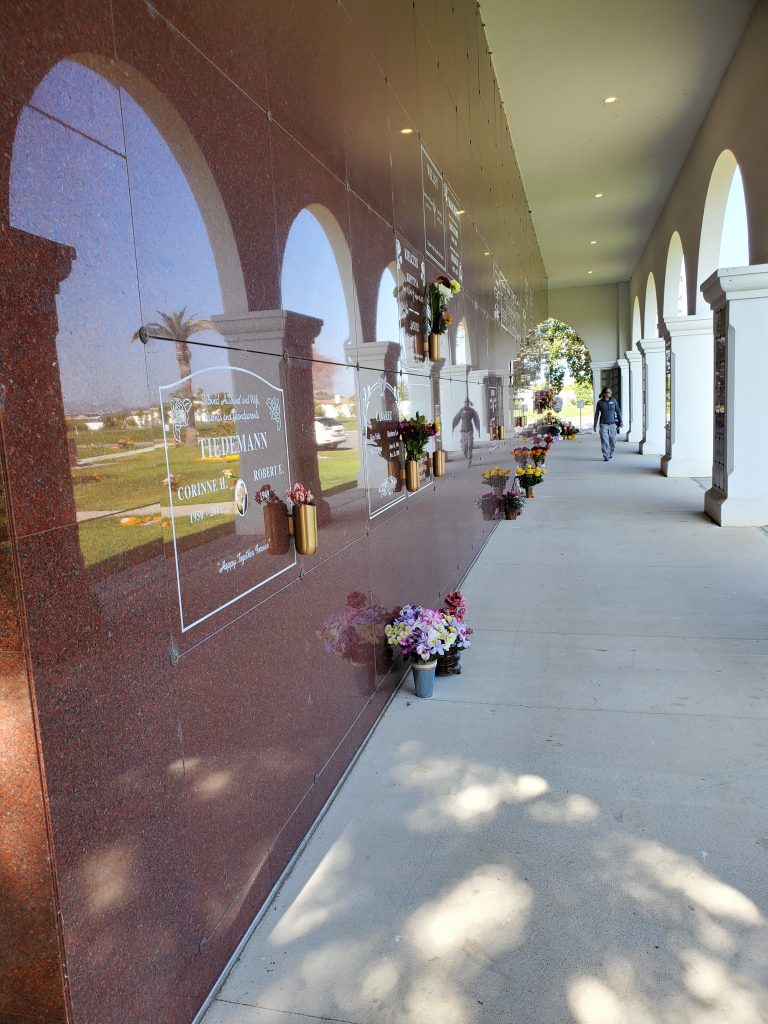


Photo below: several versions of columbaria in the extended sections of the graveyard. Some are under statues, some are part of the boundary walls


“Green burial section”
The photos below show the Missions’ version of a “green burial section”. Families can buy a memorial plaque to place “inside” the trunk of the metal tree. Or they can purchase a “flower” to hang on one of the metal tree branches. They can scatter cremains, or ashes left from cremation, in the flowers, or buried under the flowers. Alternatively, families can place “memory rocks” by the benches.
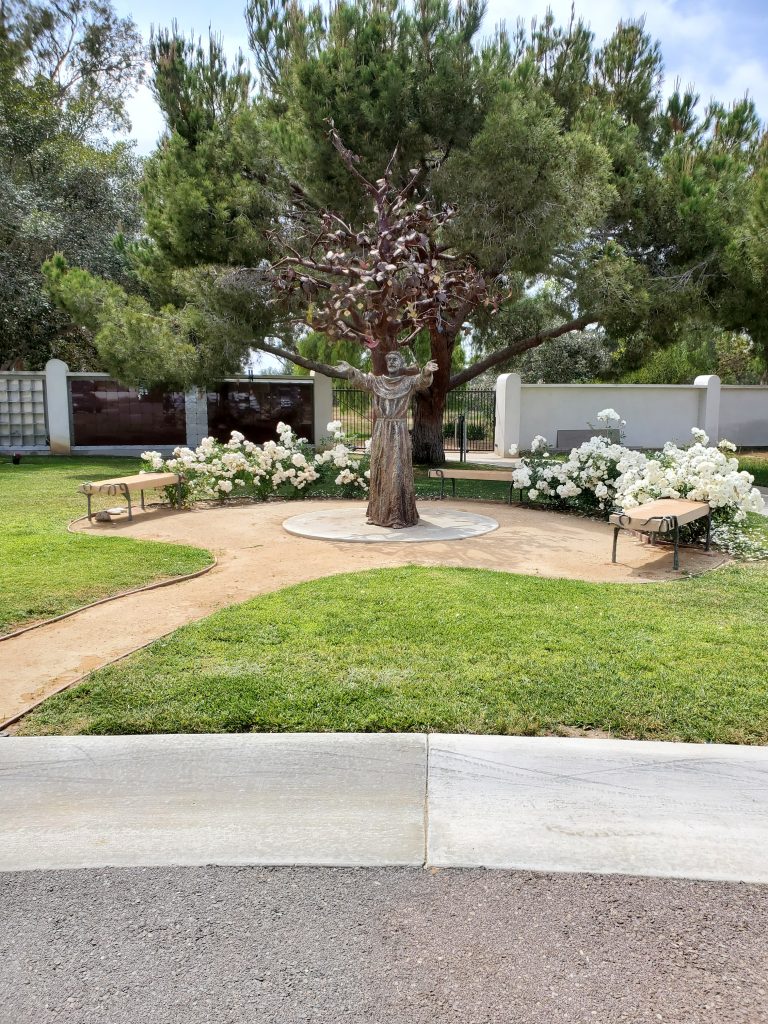
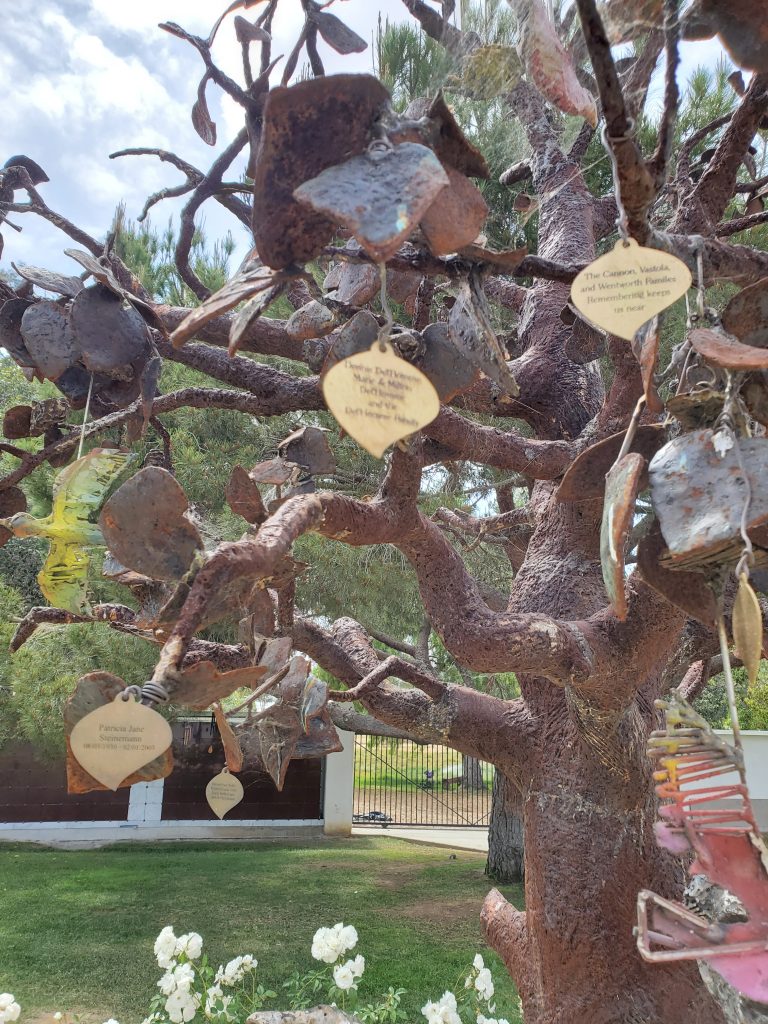
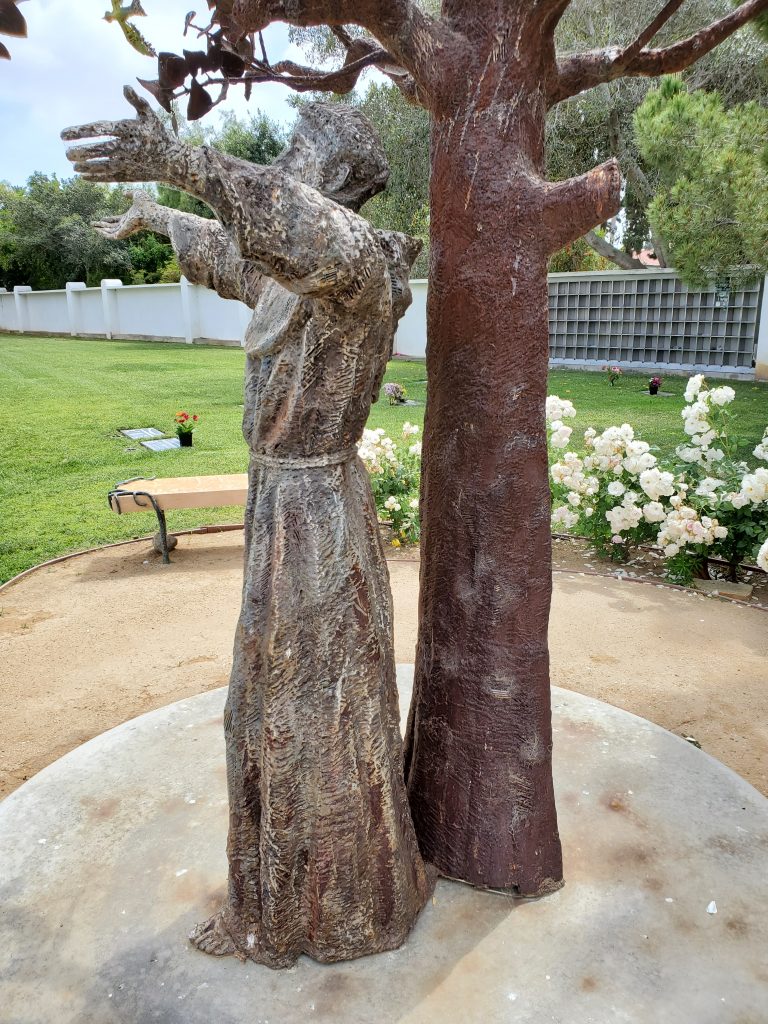
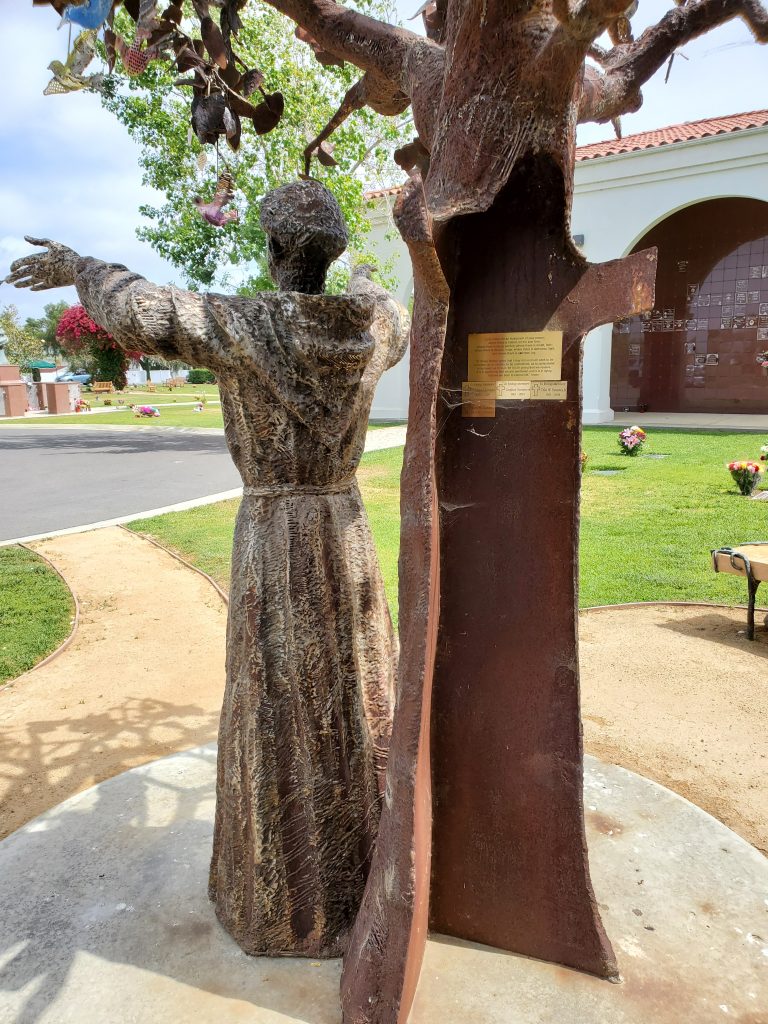

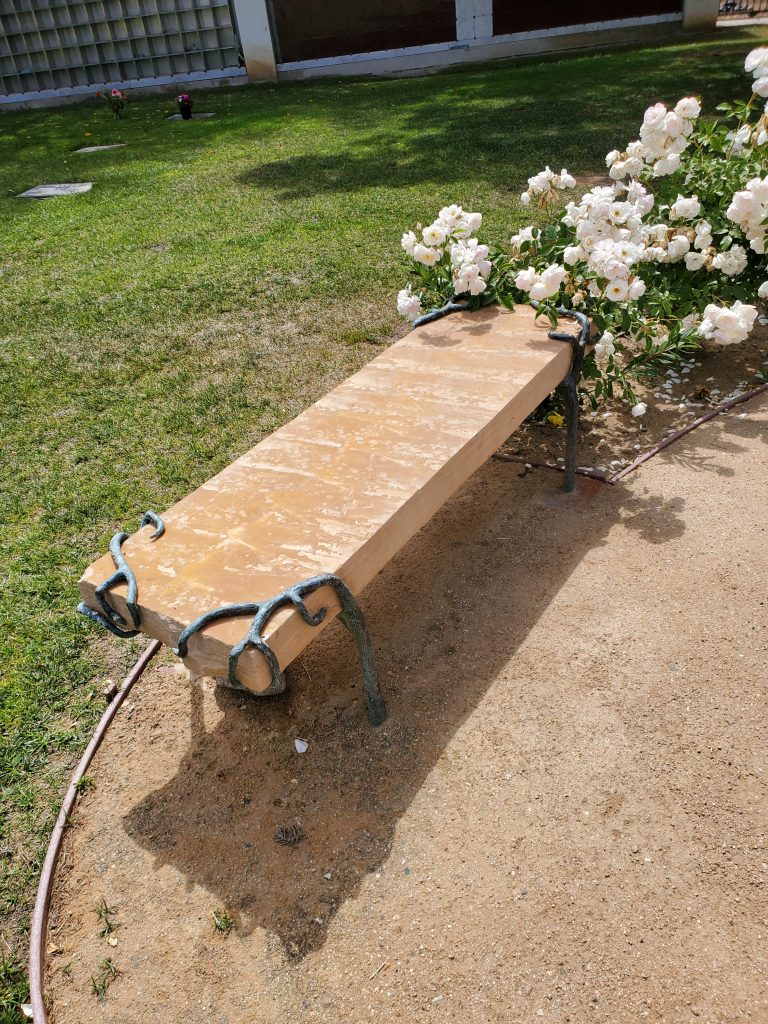
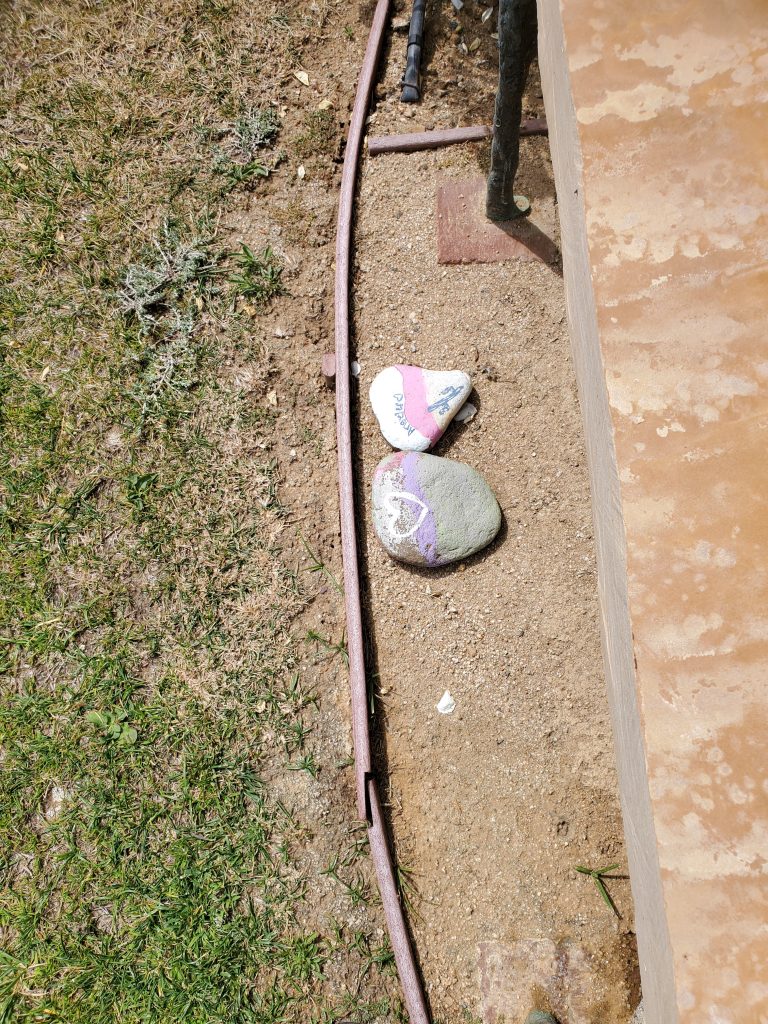

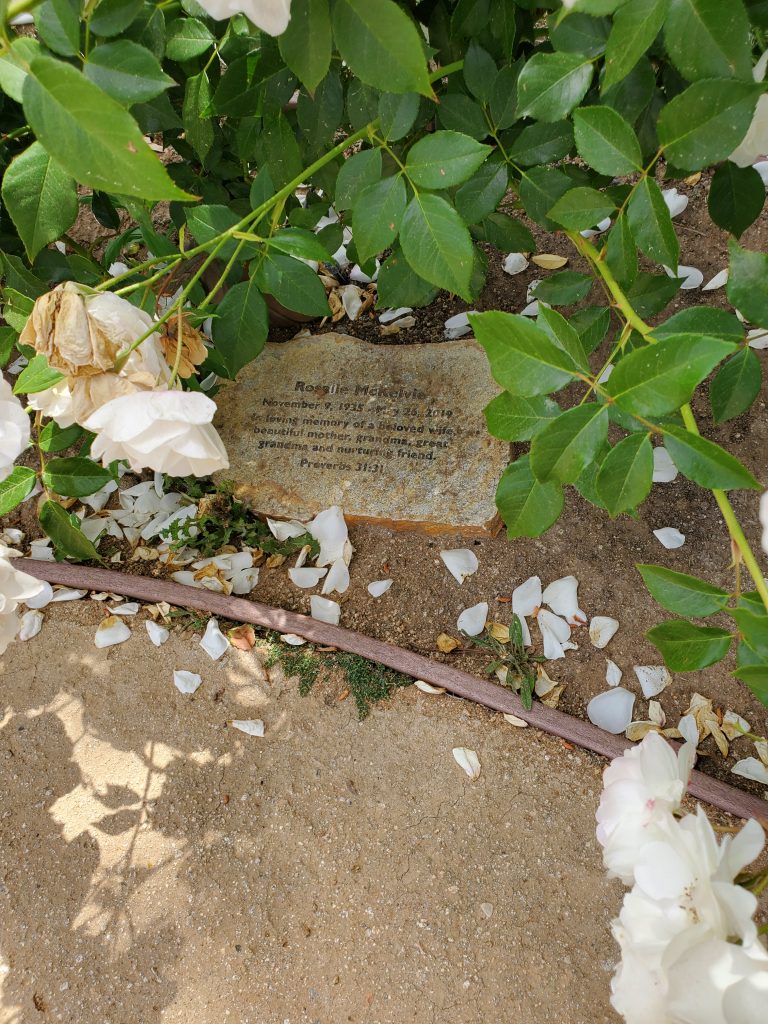
About the author – Cultures and Graveshttps://culturesandgraves.com/about-the-author/
Feel free to use the contact form below to send me a message!